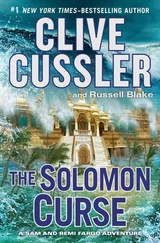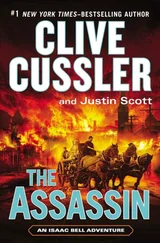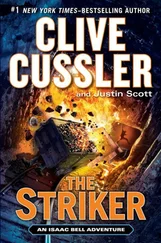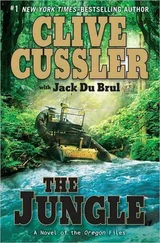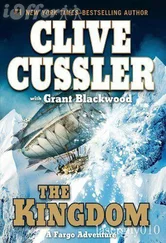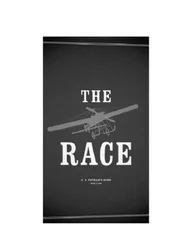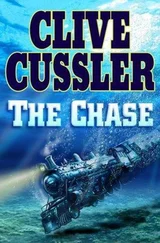The stairs on the Manhattan side led down to the City Hall district. The instant Kent hit the pavement he spun on his heel and hurried back toward the river he had just crossed. Bell followed, wondering what Kent was up to as they neared the waterfront. South Street, which passed under the bridge and paralleled the East River, was bordered by a forest of ship masts and bowsprits. Finger piers and warehouses thrust into the stream, forming slips in which moored three-masted sailing ships, tall-funneled steamers, and railroad barges.
Kent turned uptown, away from the Brooklyn Bridge. He hurried for several blocks, walking fast, not bothering to look back. When he reached Catherine Slip, he turned toward the water. Bell saw trading vessels rafted side by side. Deck cranes swung pallets of freight from ship to shore. Longshoremen trundled them into the warehouses. Kent passed the ships and headed for a long and unusually narrow steam yacht, which had not been visible from South Street.
Bell observed from the corner of a warehouse. The narrow yacht, which was fully one hundred feet long, had a sleek knife blade of a steel hull painted white, a tall steering bridge amidships, and a tall smokestack aft. Despite its businesslike appearance, it was luxuriously finished with brass fittings and varnished mahogany. Moored incongruously among the grimy trading vessels, it was, Bell thought, well hidden.
Farley Kent dashed up a gangway. Lighted portholes gleamed from the low cabin. Farley Kent pounded on the door. It opened, spilling light, and he disappeared inside and yanked it shut. Bell followed immediately. He put his hat on his head and crossed the pier with quick, firm strides. A deckhand on one of the trading vessels noticed. Bell gave him a grim stare and a dismissive nod, and the man looked away. Bell confirmed that the yacht’s decks were still empty of sailors, stepped quietly across the gangway, and pressed his back to the bulkhead that formed the cabin.
Removing his hat again, he peered in a porthole cracked open for ventilation.
The cabin was small but luxurious. Brass ship lamps cast a warm glow on mahogany paneling. In a swift glance, Bell took in a sideboard with crystal glasses and decanters secured in racks, a dining table set within a horseshoe banquette with green leather upholstery, and a voice pipe for communicating throughout the vessel. Hanging over the table was a Henry Reuterdahl oil painting of the Great White Fleet.
Kent was shrugging out of his coat. Watching him was a short, stocky, athletic-looking Navy officer with an erect posture, a puffed-out chest, and a captain’s bars on his shoulder boards. Bell could not see his face, but he could hear Kent shout, “Damned detective. He knew exactly what to ask.”
“What did you tell him?” the captain asked calmly.
“Nothing. I had him thrown out of the yard. Impertinent busybody.”
“Did it occur to you that his visit concerned Alasdair MacDonald?”
“I didn’t know what the hell to think. He gave me a case of the rattles.”
The captain seized a bottle from the sideboard and poured a generous glass. As he thrust it at Kent, Bell finally saw his face-a youthful, vigorous face that ten years ago had been splashed reverently on every newspaper and magazine in the nation. His exploits in the Spanish-American War had rivaled those of Teddy Roosevelt’s Rough Riders for coolheaded bravery.
“Well, I’ll be…” said Bell, half aloud.
He shoved open the cabin door and strode inside.
Farley Kent jumped. The Navy captain did not, but merely regarded the tall detective with an expectant gaze.
“Welcome aboard, Mr. Bell. When I learned the terrible news from Camden, I hoped you’d find your way here.”
“What is Hull 44?”
“Better to ask why Hull 44,” answered Captain Lowell Falconer, the Hero of Santiago.
He offered a hand that had lost two fingers to shell splinters.
Bell closed it in his. “It is an honor to make your acquaintance, sir.”
Captain Falconer spoke into the voice pipe. “Cast off.”
FEET POUNDED ON DECK. A LIEUTENANT APPEARED AT the door, and Falconer engaged him in urgent conversation. “Farley,” he called. “You might as well get back to your loft.” The architect left without a word. Falconer said, “Please wait here, Bell. I won’t be a minute.” He stepped outside with his lieutenant.
Bell had seen the Reuterdahl painting of the Great White Fleet on the cover of Collier’s magazine last January. The fleet lay anchored in the harbor of Rio de Janeiro. A native boat was rowing toward the bright white hull of the anchored flagship Connecticut, waving an advertisement that read:
American Drinks. SQUARE DEAL at JS Guvidor
Smoke and shadow in a dark corner of the sunny harbor scene obscured the sleek gray hull of a German cruiser.
The deck moved under Bell’s feet. The yacht began backing out of her slip into the East River. When she engaged her propellers ahead and wheeled downstream, Bell felt no vibrations, nor even the faintest throbbing of the engines. Captain Falconer stepped back into the cabin, and Bell gave his host a curious glance. “I’ve never been on such a smooth-running steam yacht.”
Falconer grinned proudly. “Turbines,” he said. “Three of them, linked to nine screw propellers.”
He pointed at another painting, one which Bell had not seen from the porthole. It depicted Turbinia, the famous experimental turbine-powered vessel Alasdair MacDonald’s mentor had raced through an international gathering of naval fleets at Spitshead, England, to dramatize turbine speed.
“Charles Parsons left nothing to chance. In the event that something went wrong with Turbinia, he built two turbine racers. This one’s named Dyname. Do you remember your Greek?”
“The result of forces acting together.”
“Very good! Dyname is actually Turbinia’s big sister, a trifle beamier, modeled after the torpedo boats of the nineties. I had her refitted as a yacht and converted her boilers to oil, which opened up a lot of space in the former coal bunkers. Poor Alasdair used her as a test craft and modified the turbines. Thanks to him, even though she’s beamier than Turbinia, she burns less fuel and goes faster.”
“How fast?”
Falconer laid an affectionate hand on Dyname’s varnished mahogany and grinned. “You would not believe me if I told you.”
The tall detective grinned back. “I wouldn’t mind a trick at the helm.”
“Wait ’til we’re out of congested waters. I don’t dare open her up in the harbor.”
The yacht steamed down the East River into the Upper Bay and increased her speed dramatically. “Quite a clip,” said Bell.
Falconer chuckled, “We rein her in until we reach the open sea.”
The lights of Manhattan Island faded astern. A steward appeared bearing covered dishes and spread them on the table. Captain Falconer bid Bell sit across from him.
Bell stood where he was, and asked, “What is Hull 44?”
“Please join me for supper, and while we head to sea I will tell you the secret of why Hull 44.”
Falconer began by echoing Alasdair MacDonald’s lament. “It’s ten years since Germany started building a modern Navy. The same year we captured the Philippine Islands and annexed the Kingdom of Hawaii. Today, the Germans have dreadnought battleships. The British have dreadnought battleships, and the Japanese are building, and buying, dreadnought battleships. So when the U.S. Navy embarks on distant service to defend America’s new territories in the Pacific, we will be outclassed and outgunned by the Germans and the British and the Empire of Japan.”
Brimming with such zeal that he left his beefsteak untouched, Captain Falconer regaled Isaac Bell with the dream behind Hull 44. “The dreadnaught race teaches that change is always preceded by a universal conviction that there is nothing new under the sun. Before the British launched HMS Dreadnaught, two facts about battleships were engraved in stone. They took many years to build and they had to be armed with a great variety of guns to defend themselves. HMS Dreadnaught is an all-big-guns ship, and they built her in a single year, which changed the world forever.
Читать дальше

